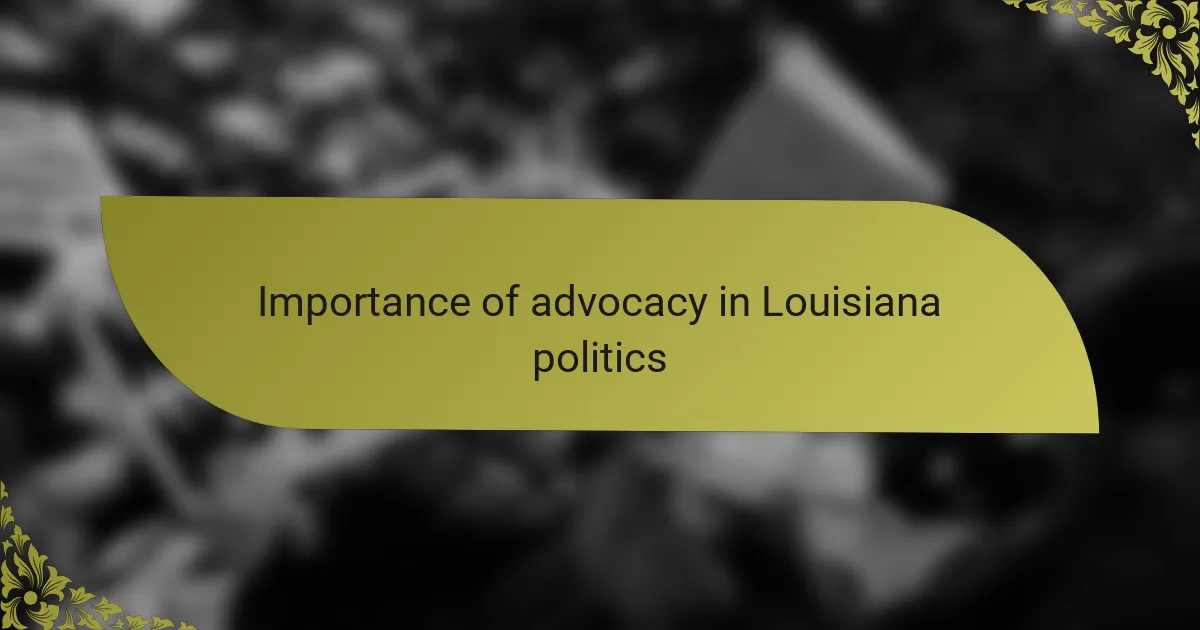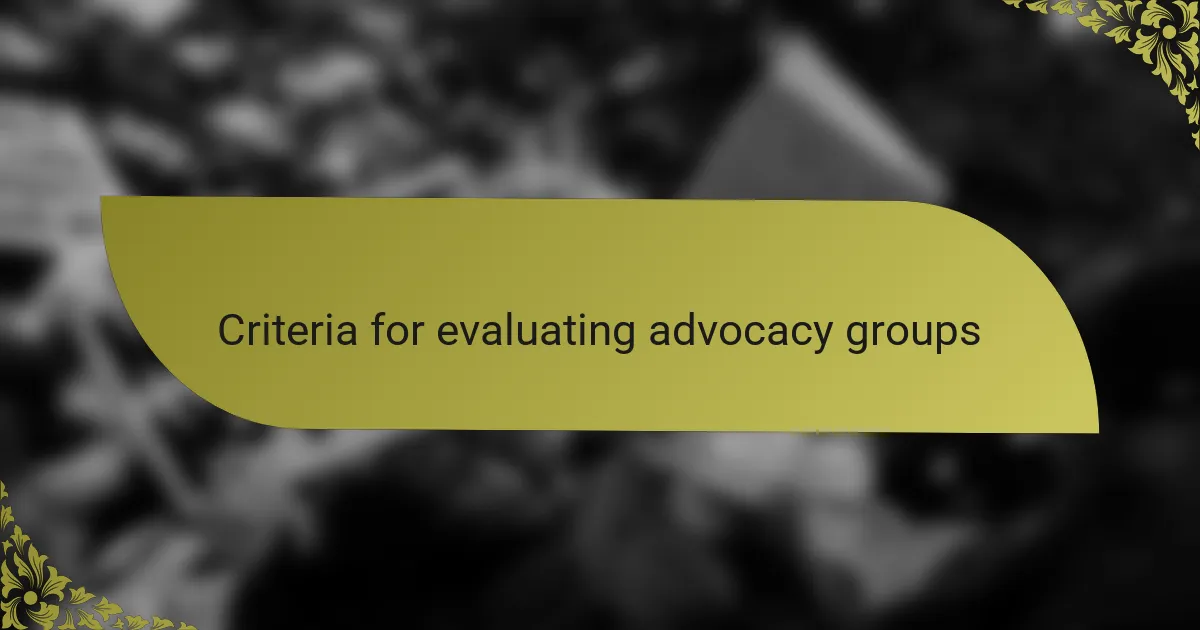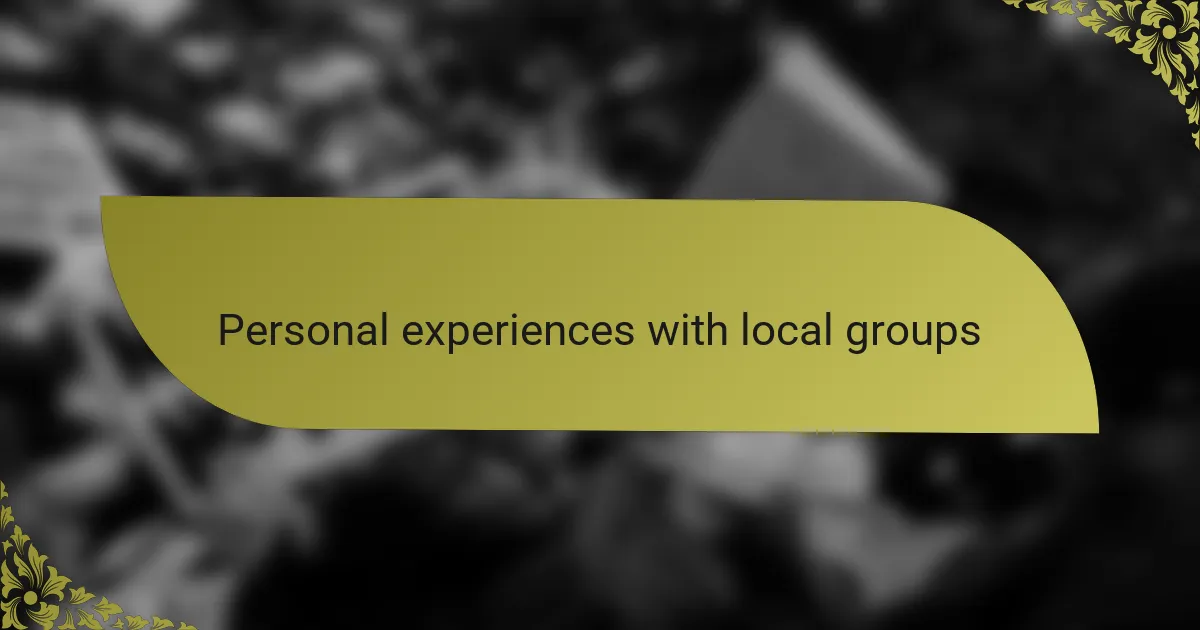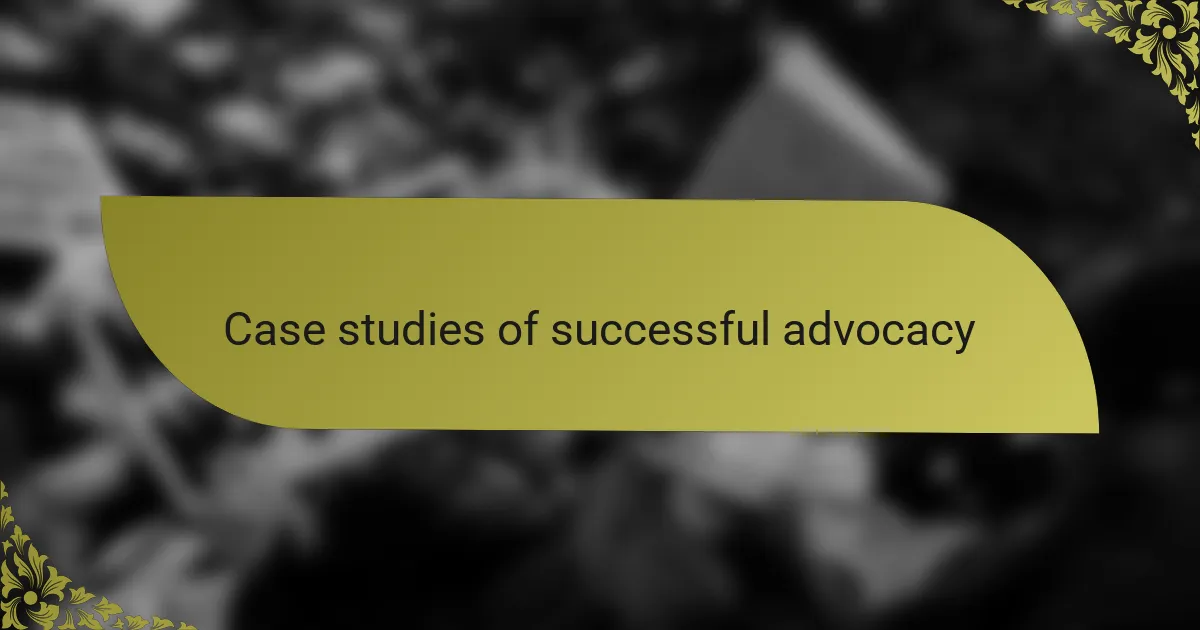Key takeaways
- Non-profit advocacy groups are essential in influencing policies and representing community voices, emphasizing mission clarity and community engagement.
- Effective groups often utilize diverse advocacy strategies, including grassroots mobilization and direct lobbying, to achieve measurable impact.
- Key criteria for evaluating advocacy groups include their clarity of mission, demonstrated impact, and transparency in operations.
- Successful advocacy often stems from strong community connections, collaborative efforts, and the ability to empower local stakeholders through engagement.

Understanding non-profit advocacy groups
Non-profit advocacy groups play a crucial role in shaping policies and influencing decision-making processes. During my time spent engaging with various organizations in Louisiana, I found these groups not only work tirelessly for their causes but also serve as community voices, highlighting the needs and concerns of the people they represent. Understanding their mission, methods, and impact is essential for anyone interested in local politics.
What struck me the most was how these organizations mobilize passionate individuals around shared goals. Their ability to foster connections and advocate for legislative changes can be quite powerful. Here are some key features to consider when evaluating non-profit advocacy groups:
- Mission Clarity: A well-defined mission statement indicates the organization’s focus and goals.
- Community Engagement: Look for how actively they involve local communities in their initiatives.
- Impact Measurement: Assess how they evaluate their success and influence on policy.
- Funding Sources: Understanding where their funding comes from can reveal potential biases or limitations.
- Advocacy Strategies: Note the methods they use—whether they engage in direct lobbying, grassroots campaigns, or public awareness efforts.
By keeping these elements in mind, you can effectively assess the strengths and challenges of non-profit advocacy groups in Louisiana.

Importance of advocacy in Louisiana politics
Advocacy plays a crucial role in Louisiana politics, often serving as the collective voice for communities that may otherwise go unheard. I’ve seen firsthand how passionate advocates can rally support for vital issues like education funding and healthcare access. Their determination often brings about real change, fostering a sense of hope and empowerment among citizens who might feel marginalized in the political landscape.
When evaluating advocacy groups, I noticed that they tend to vary widely in their approaches and effectiveness. Some focus on grassroots mobilization, engaging local communities, while others emphasize lobbying efforts to influence policy directly. Understanding these differences can help clarify their impact and significance.
| Type of Advocacy Group | Focus Area |
|---|---|
| Grassroots Organizations | Community mobilization and public awareness |
| Policy Advocacy Groups | Lobbying and direct engagement with lawmakers |
| Public Interest Groups | Advocating for specific causes, like education or health |

Criteria for evaluating advocacy groups
When evaluating non-profit advocacy groups, I often start by assessing their mission clarity. A well-defined mission helps gauge their commitment and focus. For instance, I remember looking into a local group that advocated for environmental protection in Louisiana. Their clear mission statement resonated deeply with me and made it easier to understand their work and goals.
Next, I consider their impact and results. It’s essential to see tangible outcomes from their advocacy efforts. For example, one non-profit I reviewed successfully lobbied for a coastal restoration project, which not only showed their effectiveness but also highlighted their dedication to protecting our state’s natural resources. Seeing such real-life changes often boosts my confidence in their work.
Lastly, I examine transparency and accountability. A reputable organization should openly share its financial information and demonstrate how donations are used to further its mission. I recall being impressed by a group that published detailed annual reports, which not only built trust but also motivated me to support their initiatives.
| Criteria | Description |
|---|---|
| Mission Clarity | A clear and compelling mission statement that guides the organization’s efforts. |
| Impact and Results | Demonstrated success in achieving measurable outcomes from advocacy efforts. |
| Transparency and Accountability | Open disclosure of financials and clear communication of how funds are utilized. |

Methods used for evaluation
When evaluating non-profit advocacy groups, I deeply consider the methods they use to assess their effectiveness. For example, I often look for evidence of systematic impact measurement. This might involve regular surveys or feedback mechanisms from the communities they serve. A group I observed employed follow-up surveys after their campaigns, which really highlighted their commitment to adapting and improving.
Another approach I find beneficial is analyzing their outreach strategies. Organizations that utilize a combination of digital platforms and in-person events usually engage more with their communities. I once attended a town hall meeting organized by a local advocacy group, and the energy in the room showed how much they valued community input. It made me realize the power of grassroots engagement in amplifying voices that might otherwise go unheard.
Lastly, I assess their collaborations with other organizations or community groups. Partnerships can be a strong indicator of an organization’s reputation and effectiveness. A particular non-profit I evaluated demonstrated this beautifully; their collaboration with schools and local businesses not only broadened their reach but created an atmosphere of collective effort. This helped me appreciate how collaborative strategies can enhance the overall impact of advocacy work.

Personal experiences with local groups
When I first explored the local non-profit advocacy groups in Louisiana, I was amazed at the sheer passion these organizations had for their causes. I remember attending a community meeting focused on environmental issues, and the energy in the room was contagious. It struck me how individuals from diverse backgrounds came together, sharing personal stories that highlighted their commitment to the community’s well-being.
Over time, I’ve noticed several key elements that truly resonate in these local groups:
- Strong Leadership: Many advocates lead with personal experiences that deeply connect them to their cause.
- Community Engagement: I found that a successful group thrives on active participation, fostering a sense of belonging among members.
- Goal-Oriented Communication: Clear communication about goals keeps everyone focused and motivated.
- Emotional Resonance: The stories shared during meetings often evoke a sense of urgency and drive collective action.
- Collaboration: Many groups partner with other organizations to amplify their impact, showcasing the power of united efforts.

Case studies of successful advocacy
In my experience evaluating non-profit advocacy groups, I found that successful case studies often share a common thread: they engage their community deeply and authentically. For instance, during my time working with a Louisiana-based environmental group, I witnessed firsthand how they mobilized local residents around a clean water initiative. The passion and commitment of the volunteers created a ripple effect, inspiring others to join the cause.
Another compelling example is a nonprofit focused on educational reform. They not only lobbied for policy changes but also organized workshops that empowered parents and teachers to advocate for themselves. This grassroots approach not only amplified their voice but also fostered a sense of ownership within the community. Those moments of connection and shared purpose were truly heartwarming and showcased the power of collective action.
These examples illustrate how successful advocacy isn’t just about policy; it’s about building relationships and thriving as a community.
| Advocacy Group | Success Strategy |
|---|---|
| Louisiana Environmental Group | Community mobilization and grassroots outreach for clean water initiatives |
| Educational Reform Nonprofit | Empowering local stakeholders through workshops and advocacy training |